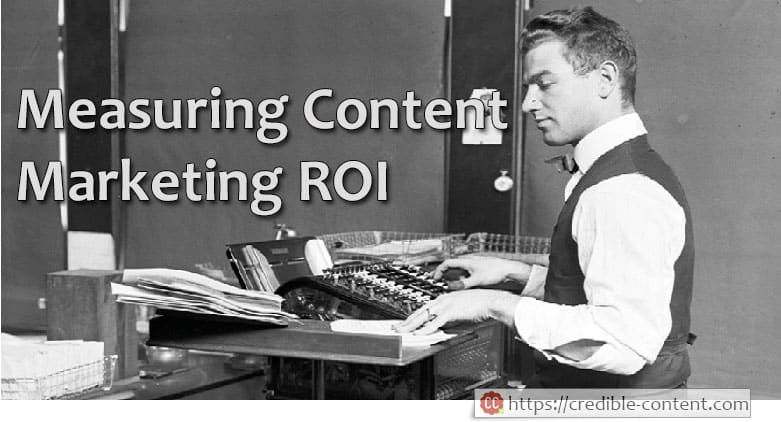According to this Marketing Land article, nearly $ 16.6 billion was spent in 2011 on content marketing. If you’re wondering why I’m referring to such an old link it’s because finding such a link wasn’t my intention, I just came across it. Anyway, a relatively new infographic gives a roundabout budget of $ 135 billion for 2014. But the point is, big money is being spent on content marketing. If so much money is being spent, then you must be interested in the ROI – how much money you earn back by investing money in content marketing?
Content marketing is obviously different from conventional advertising. It is not a campaign whereas conventional advertising is. In conventional advertising you run your ad in a newspaper or on TV and then you get a response. Suppose you spend $500 on an ad in a local newspaper which generates, let us say, 300 queries and you’re able to do a business of $15,000. You can easily calculate the ROI here.
Content marketing is an ongoing process so ROI is indirect
It is difficult to find the ROI of a single blog post although websites with lots of traffic can do that. I often tell my clients that it may take them around 6 months to make sense of the ROI on content marketing or at least on the content I am writing for them. The reason is that when you are routinely publishing content on your website, on your blog, and elsewhere, every new blog post, every new article, every new eBook or white paper and every new social update, is a brick and you’re using multiple bricks to build the platform from which you promote your business. Yes, some bricks are more effective than other bricks (some of your blog posts and social updates may go viral beyond your imagination) but mostly it is the sum total of all the content you have published on your own website or blog and elsewhere, that eventually begins to give you an ROI.
In order to get a sense of your return on investment you need to be very clear about your KPI’s – key performance indicators. Not every content marketing strategy aims to increase your sales (fine, by the end of the day, what matters is how much you have sold). Every business has different key performance indicators. Some simply want to raise awareness. Some want to increase their email and blog subscribers. Some want to improve their search engine rankings. You may want to enhance your personal brand that in return will get you more business or opportunities. You may want to generate more leads. And so on.
One way of calculating the ROI of content marketing
If you want to use content marketing to improve your search engine rankings then make a list of keywords for which you aren’t ranking well but would like to rank well. Then initiate your content marketing strategy. Provided you are making the right moves you should see an improvement within a couple of months. You can compare the expense you have incurred getting your content written or produced and your search engine rankings to calculate your ROI.
Another method would be to note down your current sales and your current content marketing expense. Then start observing your sales performance while keeping the content marketing expense the same. As I have already mentioned above, you may not notice a difference for a few months, but eventually (provided you do everything right – that is VERY important) you will. Surely the ROI will be negative initially but soon it will improve with every month.
Is it important to know the ROI of content marketing?
Obviously. This is the only way to know whether your content marketing is working or not. There may not be a direct method of knowing the ROI specifically due to the nature of your business, but there has to be a point A and then a point B and you should be able to know that how much content marketing has helped you reach from point A to point B and preferably, more effectively compared to other means of marketing.

